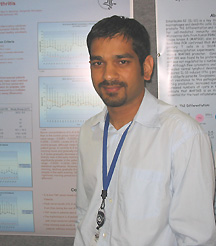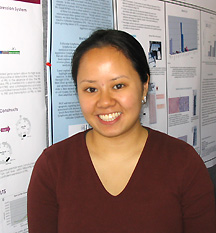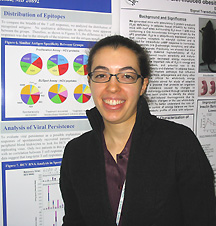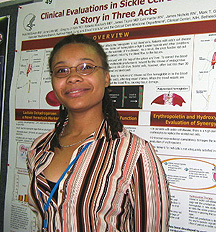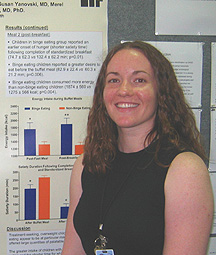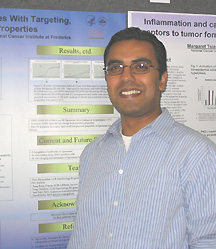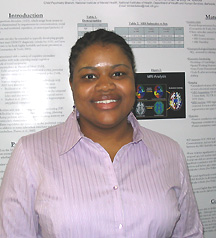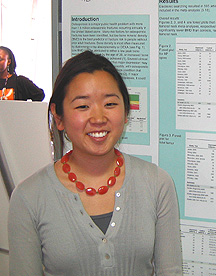All in the Family
Aixa
Alemán-Díaz, University of Michigan, Ann Arbor
The
Role of Family and Culture in Health Decision Making: A Conceptual Model
Preceptor:
Laura Koehly, Social
and Behavioral Research Branch, NHGRI
During the past
year, Alemán-Díaz and Koehly have developed a protocol to
study how family interactions affect the sharing of accurate health information
and health-promoting behaviors.
The study will focus on
multigenerational Latino families living in the United States. Several
members of each family—typically the parents and grandparents of
young children—will be asked about their family social structure
and their perceptions of common health problems such as diabetes and heart
disease. The same family members will then complete a Family Health History
(FHH) tool, such as the CDC's Family Healthware!", which will assess
risk for various diseases based on genetic, environmental, and behavioral
factors.
Upon completing the FHH,
participants will be told of their disease risk based on family health
history and given tips for disease prevention based on behavioral assessments.
The researchers are interested
in what happens next, when the participants go back to their families
armed with this new information. They will do two follow-ups, at several
weeks and six months after the administration of the FHH, to look for
changes in perceptions of what causes common diseases and their own risks
of disease, as well as changes in health-related attitudes and behaviors.
Importantly, says Alemán-Díaz,
they want to focus not just on individual family members but on how the
information affects the entire family system.
For example: Has the family
changed the way it shares information about health issues or makes health-care
decisions? Have family members developed a more accurate picture of their
risk of disease based on what the study participants learned about their
risk? Have family members made lifestyle changes to reduce their disease
risk?
This study is part of a
larger effort to understand how family relationships influence health
perceptions and decision making. Studies on other demographic groups are
in the works, says Alemán-Díaz, who graduated from the University
of Michigan in Ann Arbor in 2005 and plans to study cultural anthropology
and public health in graduate school.
She will stay at NHGRI through
this fall and help put her protocol into action working with families
in the Houston, Texas, area in partnership with the University of Texas
M.D. Anderson Cancer Center.
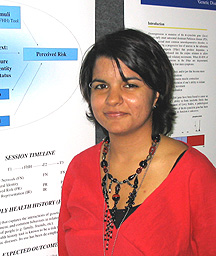 |
|
Aixa
Alemán-Díaz
|
